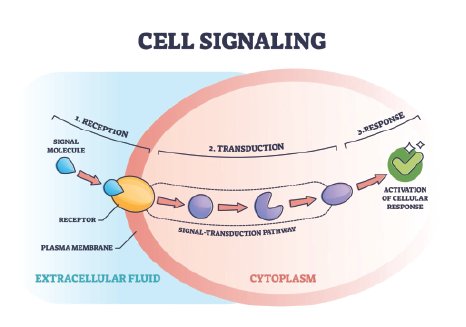HTMA: Stress Levels
Stress levels whether acute or chronic are shown in the sub-categories of the metabolic types. Developed by Hans Selye, these are the alarm, resistance, recovery and exhaustion stages. The HTMA will show the metabolic typing and indicate these different degrees of stress making it easier to determine and utilize specific therapy to work with. Within these categories we are using nutritional support (both with food and supplementation) that helps lower stress and working in harmony with the body. The following is a brief:

Fast Metabolism - Sympathetic Dominance
This is linked to excessive sympathetic nervous activity. Some dominant features are seen as Fast Oxidation and the Type A personality. This condition increases the availability of glucose for rapid metabolism via epinephrine release from the adrenal medulla. This stimulates other areas of the body and can increase the metabolic rate as much as 100%.
Very often the fast metabolizer will not complete the Krebs cycle in cell respiration and many times remain in the state of glycolysis. High tissue acidity and low pancreatic enzyme have also been noted. Both physical and emotional stress is observed and seen with elevated blood pressure and excessive perspiration, like sweaty hands.
Fast Metabolism Type 1
Increased adrenal activity and thyroid function - increased energy levels. Could experience alarm, resistance or recovery stages of stress.
Fast Metabolism Type 2
Increased adrenal cortical activity and lowered thyroid function. Dramatic energy fluctuations, mood swings.
Fast Metabolism Type 3
Decreased adrenal cortical activity with increased thyroid function
Resistance or exhaustive stage of stress, if chronic it can result in depression, irritability
Fast Metabolism Type 4
Decreased adrenal activity and decrease thyroid glandular function. Exhaustive stage, extreme fatigue, depression and anxiety.
Slow Metabolism - Para-Sympathetic Dominance
Glucose is metabolized at a reduced rate, coupled with Slow Oxidation. This Type B personality can run the risk of normal energy levels becoming inadequate. This is a result of the inability to split glucose to form adequate amounts of pyruvates and oxaloacetic acid in the glucose cycle; and this leads to the inability to produce citric acid in the Krebs cycle. Low HCL and tissue alkalinity is a prominent occurrence.
Many slow metabolizers are very methodical, seen as perfectionists who will start projects and see them through to completion. If over extended with scheduling and as work pressure builds, stress is their worst enemy, fatigue and depression will follow.
Slow Metabolism Type 1
Decreased adrenal medullary activity and decreased thyroid function Can experience any one of the four stages of stress.
Slow Metabolism Type 2
Increased adrenal cortical activity and decreased thyroid function Alarm stage of stress. mood swings
Slow Metabolism Type 3
Decreased adrenal cortical activity and increased thyroid function Resistance or exhaustion stages of stress – depression or irritability
Slow Metabolism Type 4
High adrenal activity in conjunction with elevated thyroid function. Acute alarm stage that has progressed into the resistance stage.

Have you ever looked at the Periodic Table of Elements? These elements make up everything in the universe! Everything; including us. In fact, we are the microcosm of the macrocosm. In Biblical terms, we are made in God’s image. In chemistry, we are composed mostly of about 40 elements on the Periodic Table. Our make up is essentially the combination of elements made flesh, with the spark of spirit that gives us life.
In the Hair Tissue Mineral Analysis (HTMA), the biological activity of 37 Elements is measured. They are: 15 important Nutritional Elements, 8 Toxic Heavy Metals, 14 Trace Elements. With the information of the HTMA, we now know what is available and being used in the body or what is lacking. Health begins to deteriorate when cell metabolism does not have the right foods and elements it needs. A mineral imbalance follows. Over time, function goes down and structure begins to lose its integrity. With the right foods and a balance of elements on a daily basis the body’s cells will repair and reverse aging.
What Does the HTMA Test Interpretation Offer?
The HTMA test interpretation is not just a stack of numbers—it's your personal blueprint for restoring and maintaining vibrant health. The comprehensive report delivers much more than just your levels of various minerals and metals. Here’s what you’ll get:
- A full analysis of your metabolic type, energy levels, and autonomic nervous system balance.
- Detailed dietary guidelines, including tailored supplement suggestions and essential nutrient support.
- Three transition diet options, packed with sample menu plans designed specifically for your biochemistry.
- Practical advice on food selection, grocery shopping, cooking methods, and meal preparation to help you put your results into action.
- Step-by-step support to shift habits for lasting change—because knowledge is only power when you use it.
Armed with this interpretation, you’ll have the tools to optimize your health, make smarter choices in the kitchen, and enjoy vitality from the inside out.
Collecting Your Hair Sample for HTMA
So, how exactly do you gather this magical sample for your Hair Tissue Mineral Analysis? It’s remarkably simple. Snip a small amount of hair—about a tablespoon—ideally from the nape of your neck, as close to the scalp as possible. The first inch of hair is key, since it reflects your most recent mineral activity.
Make sure your hair is clean (free from styling products, gels, or sprays) and hasn’t been chemically treated recently. If your hair is colored or permed, just wait for about 6 weeks of growth so you can use untreated hair. Place the sample in a clean paper envelope—avoid plastic, since it can cause static electricity and contamination.
That’s it! This small, painless step provides a treasure trove of data about your body’s elemental balance and metabolic state.
The HTMA will show:
- How to avoid disease states
- Any toxic or heavy metal overload
- A complete profile of 37 different elements
- The correct diet schedule based on your biochemistry
What’s Included in the Basic and Premium HTMA Packages?
Both packages set you on the path to vibrant health by measuring your unique balance of 37 nutritional and toxic elements. The basic HTMA package provides your detailed laboratory analysis—your elemental blueprint. You’ll receive:
- A comprehensive laboratory report showing your levels of 15 key nutritional elements, 8 heavy metals, and 14 trace minerals.
- Your metabolic type overview.
- Personalized dietary recommendations based on your current biochemistry.
If you want to go deeper, the premium HTMA package offers everything above, plus a one-on-one consultation. You’ll get:
- A 45-minute individualized session with me to review your results and answer your health questions.
- Expert interpretation of your mineral patterns and health tendencies.
- Actionable next steps tailored specifically for you—whether it means dietary shifts, targeted supplementation, or lifestyle strategies.
Whether you choose basic or premium, both packages give you the roadmap to nourish your body’s foundation with clarity and confidence.
Contact Johnny to order your HTMA today - $226 USD
How HTMA Stands Apart from Blood and Urine Testing
So what makes Hair Tissue Mineral Analysis (HTMA) such a valuable tool—especially compared to your standard blood and urine tests? Let’s peel back the layers:
- A Longer-Term Window into Your Health Blood tests provide a fleeting snapshot of the minerals and elements present in your system at a single moment—essentially, a freeze-frame of what's happening right now in your bloodstream. Urine tests, similarly, indicate what your body is currently excreting. In contrast, HTMA looks at mineral deposits in your hair, reflecting what has actually been stored inside your cells over the course of two to three months. This gives us a much broader, more accurate timeline of your body’s ongoing biochemistry—like having access to the director’s cut instead of just the movie trailer.
- A Cellular Blueprint, Not Just Fluid Fluctuations Most metabolic action takes place deep inside our cells—not simply in blood or urine. While routine lab tests are vital, they only survey the body's fluids. HTMA, on the other hand, serves as a blueprint for what’s truly being utilized and stored in your tissues. Through decades of research (and practical use by pioneers in the field, like Analytical Research Labs and Trace Elements, Inc.), it’s been established that the mineral patterns revealed in your hair align closely with what’s happening throughout your organs and tissues.
- Clinical Relevance Because minerals are the key regulators for enzymes, hormones, and countless biological systems, an HTMA report doesn’t just tell us what’s floating around—it uncovers which patterns deviate from normal and where your metabolism could use support. In short, HTMA moves beyond surface-level metrics, offering a reliable, non-invasive method to illuminate hidden deficiencies, toxicities, and imbalances that blood or urine testing simply can’t show.
When you want the whole story of your body's mineral status—and not just a single fleeting chapter—HTMA delivers the big picture.
What You Get with the Premium HTMA Package
While both packages provide you with your personal HTMA results and a complete profile of your elemental makeup, the premium package takes your journey a step further. You’ll receive a one-on-one, 45-minute consultation—either virtually or in person—where an experienced practitioner will walk you through your results in depth.
This added support ensures you truly understand your mineral analysis, so you can make targeted changes to your diet, lifestyle, and supplementation. Personalized guidance based on your biochemistry means you’re not left to guesswork—you get expert insights, actionable steps, and the clarity you need to move forward with confidence.
When to Expect Your HTMA Results
Once your hair sample is submitted, you can typically expect your comprehensive HTMA report within about two weeks. This timeframe allows for accurate laboratory analysis and ensures you receive a detailed, personalized interpretation of your mineral and toxin profile. Best Selling author Johnny Delirious worked with one of the first pioneers to use the scientific modality - Hair Tissue Mineral Analysis (HTMA), to get the right diet and supplements to experience life free of disease. The guessing game to achieve good health is over. Today he gives his expert advice with over 40 years of experience as a professional in the health industry.

Dr. Michael Rudulph Maxon, AKA Johnny Delirious, Laboratory Naturopathic Doctor, gives expert advice rooted in holistic healing principles, drawing on 40 years of professional experience in the health industry. He helps his patients recover and heal using food and Ancient Greek therapies, utilizing organic remedies that are all backed by modern laboratory science. He is unquestionably the only TRUE Addiction & Hepatitis A, B, and C Recovery Pioneer. Free of mood-altering substances (cocaine) since 1991, with no viral load or antibodies of hepatitis since 1994, and no cirrhosis since 1995. Nobody in his life—including doctors, friends, and family—thought he would live past 1992; they all said he was going to die. But, Johnny chose life, not death, and learned how to heal his body, mind, and spirit by developing new protocols with natural therapies, including the thoughtful application of homeopathic remedies where appropriate. For over 20 years, he has helped many others recover, including professionals like doctors, dentists, and lawyers, who prefer alternative medicine over chemical drugs or surgery to address the same conditions that everyone said were hopeless.
Contact Johnny for a Hair Tissue Mineral Analysis (HTMA) to get the right diet, supplements, and expert advice, benefiting from his 30 years of experience in these specialized protocols.
United States - 972-825-7912
http://www.johnnydelirious.com


